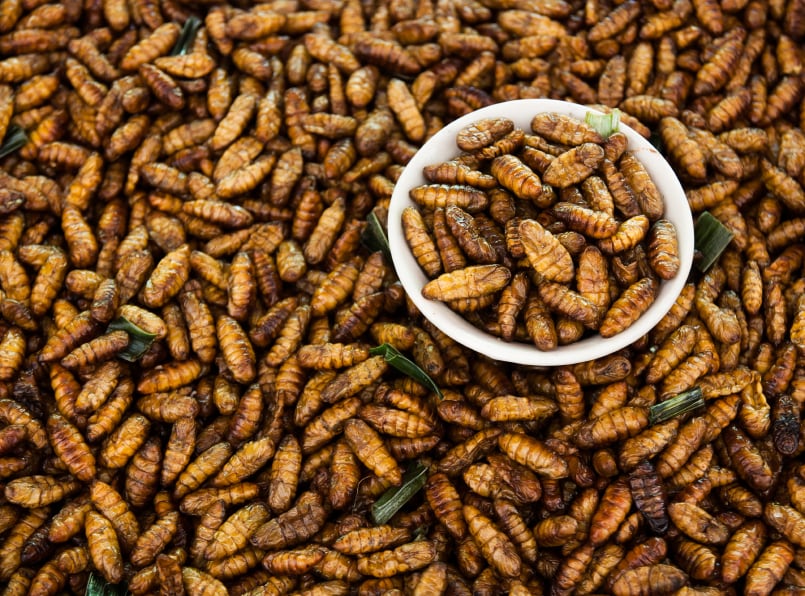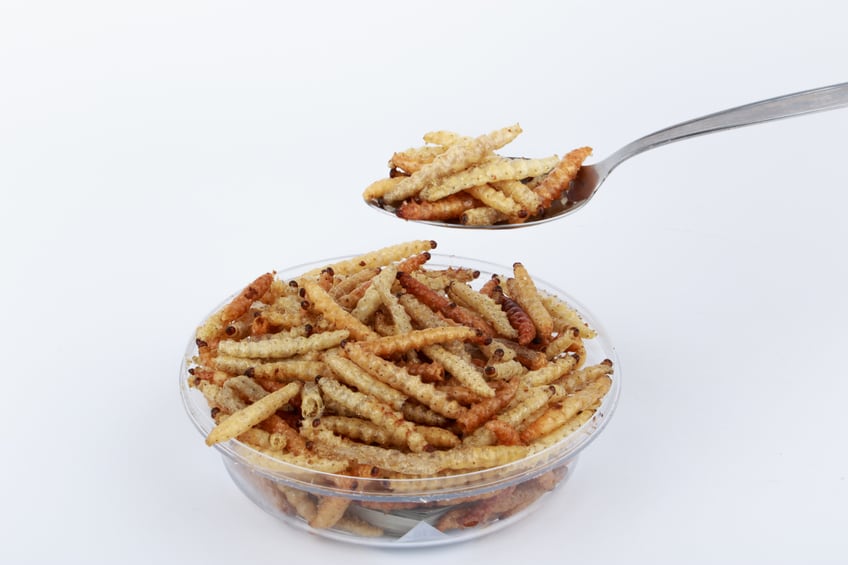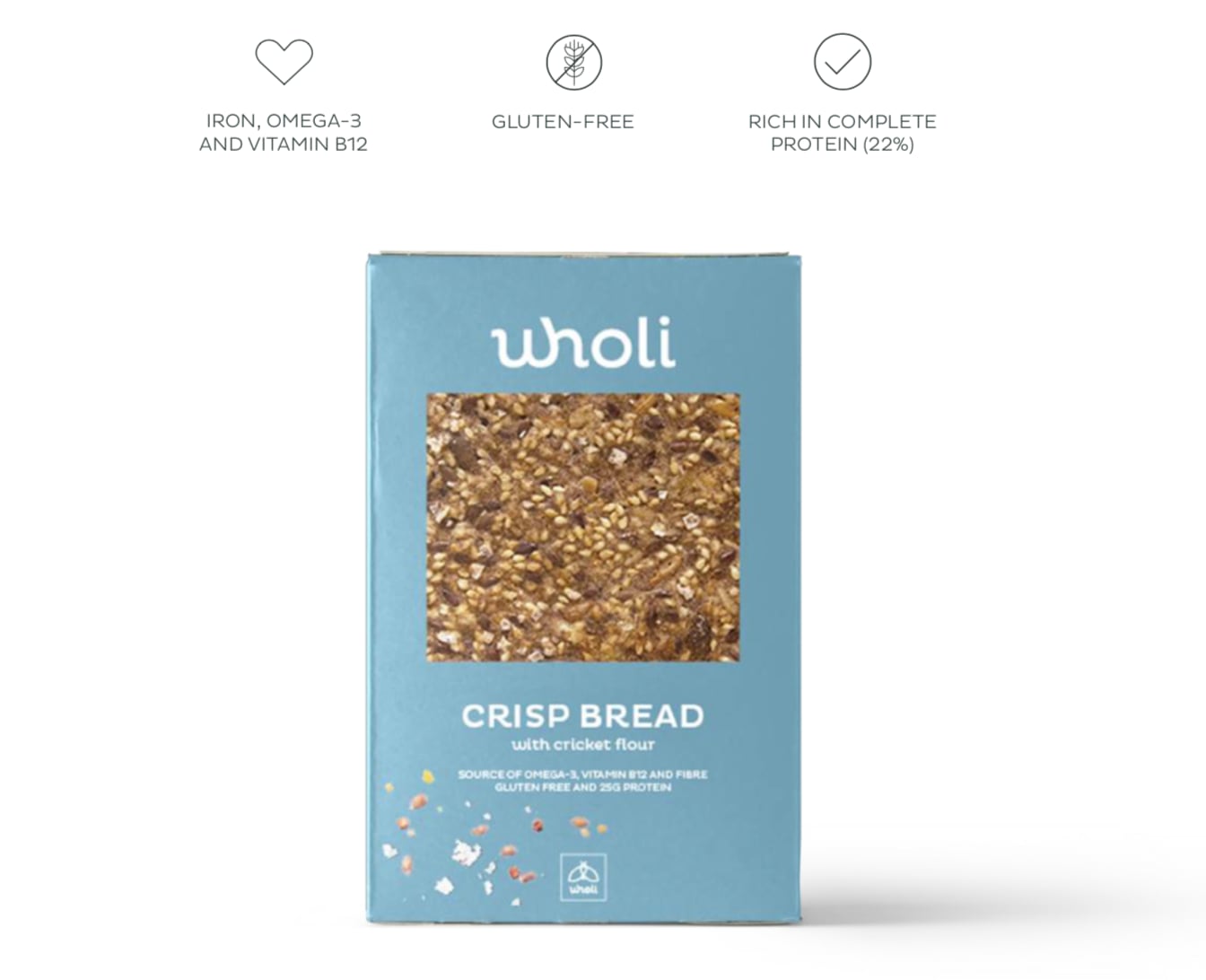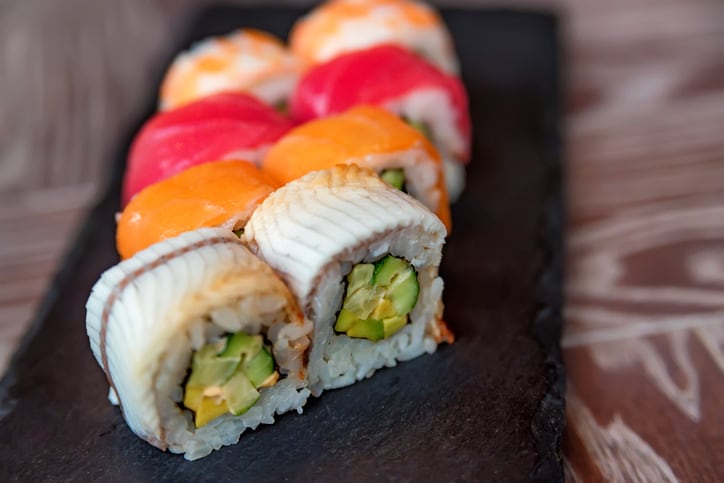There is an increasing range of insect-based products, such as whole/flour, snacks, health bars, pasta, pasta sauce and burgers. Edible insects are promoted as a sustainable food alternative. It is also claimed there are numerous health benefits from eating bugs and insects.
In November last year, Sainsbury’s became the first UK supermarket to stock edible bugs. It sells Eat Grub’s Smoky BBQ Crunchy Roasted Crickets in 250 stores across the country -- a savoury snack that can eaten alone or used to garnish dishes such as tacos, noodles or salads.
The identity crisis bugging the industry
But this small but fledging industry is struggling to some extent with its identity.
Does it present itself as food that can mimic what the consumer already knows, such as pasta and burgers or a savoury snack? Is it, like sushi, a new thing altogether offering completely new recipes? May it even be better marketed as a health supplement?
“There is this dilemma about whether you try to create something that is familiar that incorporates insects, like bug burgers, or do you move into something that’s completely new,” agrees Nick Rousseau, managing director of the Woven Network CIC, the UK-based network for insects as food and feed.
Could innovations in restaurant space provide the answer?
Grub Kitchen in Pembrokeshire is the UK’s first dedicated insect restaurant. “People from Thailand, Vietnam, Cambodia, China, Africa, Mexico, Columbia and New Guinea to name just a few, are regions where the inhabitants eat insects for nutritional value as well as for taste,” it says.
“We aim to turn entomophagy [the practice of eating insects by humans] from a novelty to normalcy integrating the many various types of edible insects with twists on our most popular and well-loved dishes,” it adds. It aims to give “people a full understanding of the nutritional benefits and positive environmental implications behind this novel and innovative new food.”
While most of the dishes on Grub Kitchen’s menu are traditional dishes promoting sustainable local produce, some dishes have insects as the core ingredient, and in others it is used as flavouring.
For example, its Sunday lunch menu features a Bug Wellington, which contains chestnuts, mixed bugs, wild mushrooms and nut roast, with spinach and butternut squash wrapped in cricket crepes and puff pastry. Starters on its dining experience menu include a sweetcorn chowder with basil oil and a grasshopper crumb, and a zesty black ant and olive crusted goat cheese with a chicory, fennel and fig salad.
The main courses include a smoked chipotle cricket and black bean chilli. Its daytime menu has cricket blinis with broad bean humus and crispy seaweed, and the restaurant’s signature bug burgers (a blend of toasted crickets, mealworms and grasshoppers, spinach, sundried tomato and seasonings).
What does this taste like? “Unseasoned insects generally taste quite like bran, tea or even grassy cereals,” according to the restuarant. “Cooked, insects carry flavour and seasoning really well, but unseasoned can vary between toasted nuts, creamy avocado or even Smokey bacon. Slow roasting brings out an almost nutty taste; stir-frying makes them taste a bit like seared meat. Cricket flour actually tastes almost chocolatey. Some insects are said to take on the flavour of the food you feed them, which is very exciting from a culinary perspective.”
‘Nature’s little multi-vitamin packages’
“Insects are very high in protein and indeed, gram per gram, are higher in protein than beef, chicken or pork,” it says. “Most are low in fat, yet it is suggested that the fats they do contain are mostly PUFA’s (poly-unsaturated-fatty-acids). They are also mostly low in cholesterol. They also contain essential amino acids and trace minerals and vitamins such as: calcium, phosphorous, iron, thiamin, riboflavin and niacin.” Grub Kitchen’s website lists information about the numbers and types of edible insects, their nutritional value and how to eat and cook them.
So, can this industry innovate to the extent it becomes more widely and accepted and eaten?
“When we ask people about what prompted them to try world cuisines at home or through retail, one of the most common reasons is that they’ve tried it at a restaurant first. This is how food trends to flow,” says Kiti Soininen, director of food and drink research at Mintel, a London-based market research company.
“With insects being quite a well-established part of certain world cuisines I wonder if there is something of an opportunity there to build exposure.”
She cites sushi as an example of product once considered weird and whacky becoming popular with Western consumers. “Part of the success story for sushi has been that it trickled down from top-end restaurants through to the mainstream through to the supermarket shelves.”
But Trish Caddy, a senior foodservice analyst at Mintel, has a different view. "While some edible insects feature recognisable flavours, such as citrus ants (which is like eating lemon pulp) and chapulines (grasshoppers that taste like a mix of salt-and-sour), the current use of insects in restaurants is not so much as an ingredient to enhance the flavour of a dish as a gimmick to wow diners.
“As the usage is still limited to some London-based fine dining restaurants eg Mãos (Shoreditch) and specialist Mexican restaurants eg Santo Remedio (London Bridge) that feature edible insects on their menu, I simply don't see insect eating to become common practice in the foreseeable future."
Regulation remains a hurdle
The industry is also in a transition period as the EU considers what insect ingredients will be included in its list of authorised novel foods. This decision will be made at the end of the year. Until then, producers can sell only a small selection of ingredients, such as buffalo worms, mealworms, grasshopper and crickets, that the EU is considering putting on the authorised novel food list.





